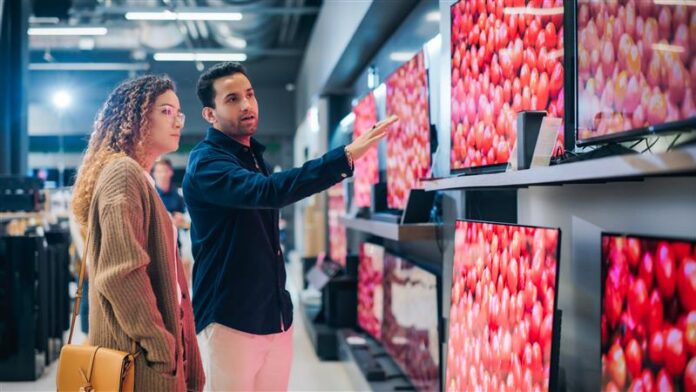Running an event—whether it’s a grand opening, a clearance sale, or a product launch—requires strategic marketing to ensure strong attendance and engagement. Digital advertising offers precise targeting, ensuring your message reaches the right audience at the right time.
In this guide, we’ll walk through a step-by-step process to create a successful digital campaign, using a home electronics retailer hosting a limited-time sales event as an example.
Step 1: Define Your Goals and Audience
Before launching a campaign, determine:
✔ Primary goal: Is it foot traffic to the store, online pre-orders, or brand awareness?
✔ Target audience: Who is most likely to attend? (e.g., tech enthusiasts, bargain hunters, gamers, families)
✔ Event details: Date, location, special offers, featured products.
Example for a Home Electronics Retailer:
- Goal: Increase in-store foot traffic for a 3-day Smart TV & Home Audio Sale.
- Audience: Homeowners, renters, and tech-savvy shoppers in a 25 km radius.
Step 2: Choose the Right Digital Advertising Channels
1. Geofencing & Location-Based Targeting
- Why? Capture potential customers near competitor stores (Best Buy, The Source, Walmart) and high-traffic areas.
- How? Create a geo-fence around those locations so when people enter, they see mobile ads for your event.
- Example: Someone visiting a Best Buy location sees an ad:
“Limited-Time Smart TV Sale – 50% Off! Visit [Retailer Name] Just 5 Minutes Away!”
2. DOOH (Digital Out-of-Home Advertising)
- Why? High-visibility placements in adult-focused locations drive awareness.
- How? Place video or static ads on screens in gyms, malls, office buildings, and transit hubs.
- Example: A 10-second ad on a digital screen at a local co-working space promoting the sale.
3. Addressable Programmatic Ads (Display, Audio & Video)
- Why? Target specific households and users who are actively interested in home electronics.
- How?
- Display Ads: Retarget users who have visited your website or searched for Smart TVs.
- Audio Ads: Short audio ads on Spotify and podcasts about tech or home improvement.
- Video Ads: 15-30 second video clips on YouTube, Connected TV, and social media.
- Example: A short video ad showcasing a Smart TV deal appears before a YouTube tech review.
Step 3: Optimize Your Landing Page & Registration Process
Your website should have: ✔ Clear event details (dates, featured deals, location)
✔ A one-click RSVP or reminder button
✔ Mobile-friendly design for easy browsing
✔ A FAQ section about pricing, financing, and store location
Step 4: Use Retargeting & Email Marketing
- Capture site visitors and show follow-up ads for the sale.
- Send email reminders to past customers and loyalty program members.
- Use an email drip campaign with countdown reminders and featured product highlights.
Step 5: Measure & Adjust for Future Events
- Track ad engagement, foot traffic, and sales conversions.
- Analyze which digital channels performed best.
- Apply insights to improve the next big sales event.
Final Thoughts
A well-planned digital strategy ensures a higher turnout and stronger engagement for in-store events. Using a mix of geofencing, DOOH, addressable programmatic ads, and retargeting creates maximum exposure and impact. Whether you’re hosting a flash sale, grand opening, or product launch, a data-driven campaign will help you attract more customers and increase sales.
The best part? I can handle all the heavy lifting, from campaign strategy to execution, ensuring your event gets the visibility it deserves. That way, you can stay focused on preparing in-store, training your staff, and delivering an amazing customer experience. Let’s connect and start planning your next successful event!

